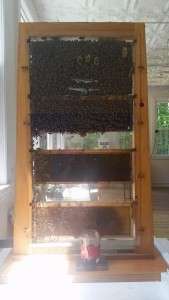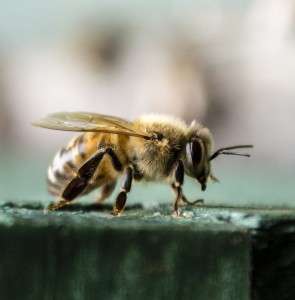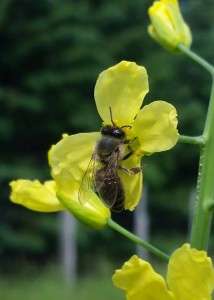Observation Hive – Russian Honeybees


In this observation hive, located at the Washington Island Art & Nature Center, you can view up close USDA certified Russian honeybees. Russian honeybee history dates back to 1905 with the completion of the Trans-Siberian railway. The railway covers 6,850 miles from Moscow to the Primorsky territory in Siberia making possible the migration of Apis Mellifera, the Western honeybee, into the remote Primorsky territory. The remoteness is what made the Russian honeybee possible. 
Prior to 1905, the Primorsky territory was populated by Apis Cerana. The common names given to Apis Cerana are the Eastern honeybee or the Asian honeybee. The Russian honeybee is 90% Caucasian from the Caucus Mountains 5% Italian and 5% Carniolan.

The Russian Primorsky area is where the USDA, in 1996, found a honeybee that was genetically resistant to tracheal mites and Varroa destructor; parasitic mites responsible for large numbers of colony deaths in the United States. For over 100 years the Russian honeybee had developed a unique trait unlike other domesticated bees. The Russian honeybee was genetically resistant to Varroa, could smell the mite and remove it by biting and chewing the exoskeleton. Beekeepers call this hygienic trait grooming.

The Primorsky region of Russia and Washington Island, Wisconsin share the same 48th longitudinal parallel making Washington Island an optimal environment for preserving Russian bee genetics. Surviving the harsh, cold, Siberian-like winters of Eastern Russia make the Russian honeybee cold-hearty. It also makes the Russian honeybee well-suited for Wisconsin winters. Washington Island is one of only four northern U.S. locations where the Russian honeybee is commercially bred. Find out more about Washington Island’s Russian honeybees at Sweet Mountain Farm.com

